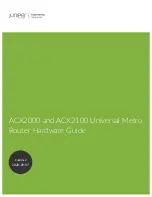
001-5006-000_FCC.docx
Page 17
2
2
S
S
Y
Y
S
S
T
T
E
E
M
M
A
A
R
R
C
C
H
H
I
I
T
T
E
E
C
C
T
T
U
U
R
R
E
E
A
A
N
N
D
D
N
N
E
E
T
T
W
W
O
O
R
R
K
K
P
P
L
L
A
A
N
N
N
N
I
I
N
N
G
G
This section briefly discusses network architecture (including basic network types),
interfacing modems and DTE, data protocols for efficient channel operation, addressing, and
repeaters.
Guardian is designed to replace wire lines in SCADA, telemetry and control applications. The
RS-232 serial port allows direct connection to Programmable Logic Controllers (PLCs) or
Remote Terminal Units (RTUs). A SCADA system is defined as one or more centralized
control sites used to monitor and control remote field devices over wide areas. For
example, a regional utility may monitor and control networks over an entire metropolitan
area. Industry sectors with SCADA systems include energy utilities, water and wastewater
utilities, and environmental groups.
The Guardian is intended for use in the Industrial Monitoring and SCADA market. The range
of the Guardian is dependent on terrain, RF (radio frequency) path obstacles, and antenna
system design. This section provides tips for selecting an appropriate site, choosing an
antenna system, and reducing the chance of harmful interference.
2.1
SINGLE COVERAGE AREA
In a network topology with only a single coverage area (all units can talk to one another
directly), there are several common system configurations.
The most common is for one unit to be designated as a master and the rest designated as
remotes. Another system configuration is Report-by-Exception.
2.2
NETWORK ARCHITECTURE
2.2.1
Point-to-Point
A point-to-point network is the most simple of all networks, and may be used for connecting
a pair of PC's, a host computer and a terminal, a SCADA polling master and one remote,
mobile applications (like in-vehicle GPS receivers and base stations) or a wide variety of
other networking applications.
Figure 2.1 – Point-to-Point Network
















































